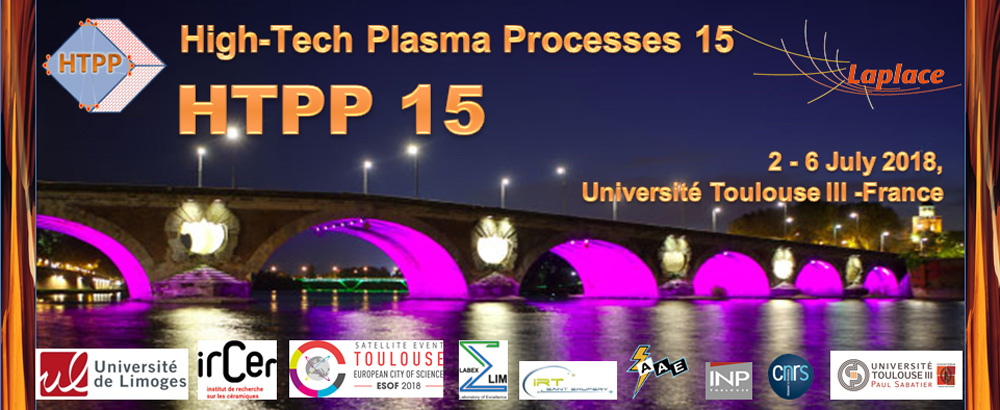Characterization of laser-induced plasmas
Arnaud BULTEL, Aurélien FAVRE, Vincent MOREL, Gilles GODARD
CORIA UMR 6614 – CNRS et Université de Rouen, 76801 St-Etienne du Rouvray, France
arnaud.bultel@coria.fr
Laser-induced plasma is produced when a high-energy laser pulse is focused on matter in any phase. The electric field within the pulse is sufficiently strong to give momentum to free electrons already present in the sample or to promote free electrons in the case of a dielectric medium by multiphoton ionization. Then the remaining energy is absorbed by these electrons, producing additional energetic electrons by collisions and heating the whole by inverse Bremsstrahlung until temperatures of the order of several 10,000 K. This neutral to plasma transition takes place on some nanoseconds, which leads to an increase in the pressure much higher than the environment's one. The plasma then expands according to a hypersonic regime and cools. The collapse of the collision frequency may lead to a significant departure from Local Thermodynamic Equilibrium (LTE).
The characterization of these plasmas is crucial in terms of departure from LTE since they can be used to perform the multi-elemental composition analysis of samples in the framework of the LIBS (Laser-Induced Breakdown Spectroscopy) diagnostics. Indeed, the LIBS diagnostics is based on the analysis of the emission spectrum, therefore on that of the relative population number density of the upper state of the observed transitions. The relative population number density on the ground state of the components can therefore be determined directly in case of LTE by a simple assumption of the Boltzmann type. If LTE is not fulfilled, the relationship between ground and excited states can only be obtained using a collisional-radiative model, the use and validation of which are rather tricky.
We have analyzed laser-induced plasmas using Optical Emission Spectroscopy on different types of metallic samples (aluminum and tungsten) and gases (argon, air and air saturated with acetone vapors). The different plasmas have been mainly obtained with a lambda_1 = 1064 nm picosecond laser source. The emission spectra exhibit lines mainly broadened by Stark effect whose analysis leads to the determination of the electron density ne. The thorough analysis of the emission spectra has also led to the excitation temperature determination. The influence of the absorption of a second laser pulse of the nanosecond type (double pulse experiments) at lambda_2 = 532 nm has been also studied with respect to energy and gate delay.
These measurements have been coupled with the aerodynamic behavior of the obtained plasmas by studying the propagation of the shockwave and of the contact surface between the central plasma and the surrounding shock layer using Laser Shadowgraphy and Schlieren Imagery.
Finally, Laser-Induced Absorption Spectroscopy experiments have been performed. They consist in absorption spectroscopy done on the continuum emitted by a laser-induced plasma produced on the optical axis on the other side of the plasma to be analyzed and delayed with respect to the latter.

 PDF version
PDF version
